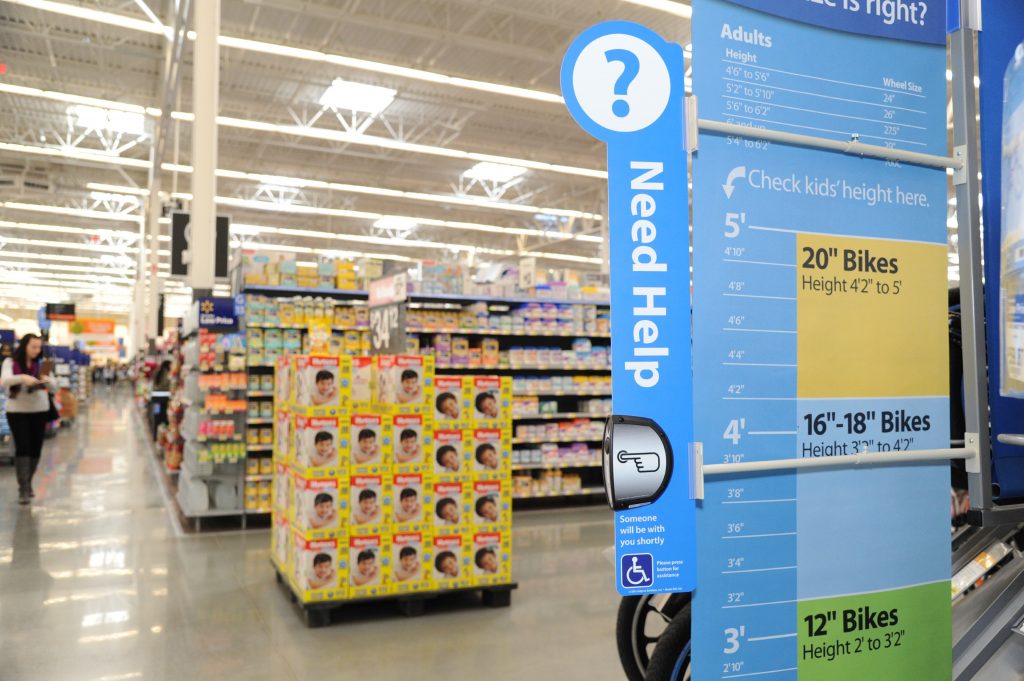Inflation Is Scaring People Away From Walmart?
Walmart is worried that inflation is scaring away their customers and hurting their bottom line.
This article is more than 2 years old

When Walmart releases its quarterly earnings report on Thursday, investors are going to have to take a long, hard look at whether signals make them nervous. Inflation is quickly rising, increasing concerns among investors about what this means for Americans’ spending habits following a pandemic- and stimulus-fueled buying binge and ultimately adding ammunition to Walmart’s worries.
According to the Bureau of Labor Statistics, the consumer price index increased by 7.5% in January from the previous year, the fastest increase in 40 years. Food prices have risen by 7% in the last year. Consumers and vendors alike learned a lot during the holiday season. However, despite items being out-of-stock and after facing multiple shipment delays along with other supply chain snarls, Walmart still expects to earn a profit. The holiday season will be included in Walmart’s earnings report, which will cover the three months ending Jan. 31. Investors, on the other hand, will be most interested in hearing about recent patterns. Because of this, consumers should think twice about opening their wallets. When money is tight and they no longer receive government stimulus checks, who is going to cover the electric bill?
Publicly traded companies have been pressured by Wall Street, legislators, and customers to set ambitious sustainability goals. In a growing number of states, large U.S. cities, and countries, single-use plastics are being outlawed or penalized. Consumers, especially millennials and Generation Zers, are more worried about a company’s environmental impact. Investors often consider environmental, social, and governance issues when deciding whether to buy or sell a company’s stock.
Analysts disagree on whether inflation would benefit or damage Walmart’s sales and margins. Lower-income customers may spend less, but Walmart will take a larger share of middle- and upper-income buyers’ wallets because of its reputation for bargaining. She has a buy rating on the stock and a price target of $184, which is about 37% higher than where it is now trading. According to Refinitiv, this is greater than analysts’ average price prediction of $165.44.

Customers who feel stung by Walmart, according to Scot Ciccarelli, a retail analyst at Trust Securities, have few options for reduced costs; this applies to everyone except privately owned German discounter Aldi or dollar retailers like Dollar General. According to him, this equates to a decrease in overall demand. These remarks, as well as those made by Target, caused a sell-off.
Walmart has yet to make a forecast for the fiscal year ahead, which begins in fiscal 2023. Analysts expect earnings of $6.70 per share on $588.36 billion in revenue for the entire year. This is up from $6.42 per share on $571.45 billion in fiscal 2022.
Chuck Grom, a retail analyst at Gordon Haskett, said he expects to hear updates on Walmart’s efforts to make money in new ways These new ways are to be in addition to holiday results and inflationary effects. Walmart Connect, its ad business, Walmart+, and GoLocal, its membership service, are all attempting to grow.
Other retailers, according to Grom, have definitely benefited from the pandemic. Target’s same-day offerings, such as curbside pickup and home delivery through Shipt, drew in additional customers. Warehouse clubs such as Walmart’s Sam’s Club, Costco, and BJ’s Wholesale have seen an increase in memberships and renewals. Home Depot and Lowe’s also sparked a resurgence in home remodeling and landscaping initiatives. The jury is still out on Walmart, though, he remarked.




